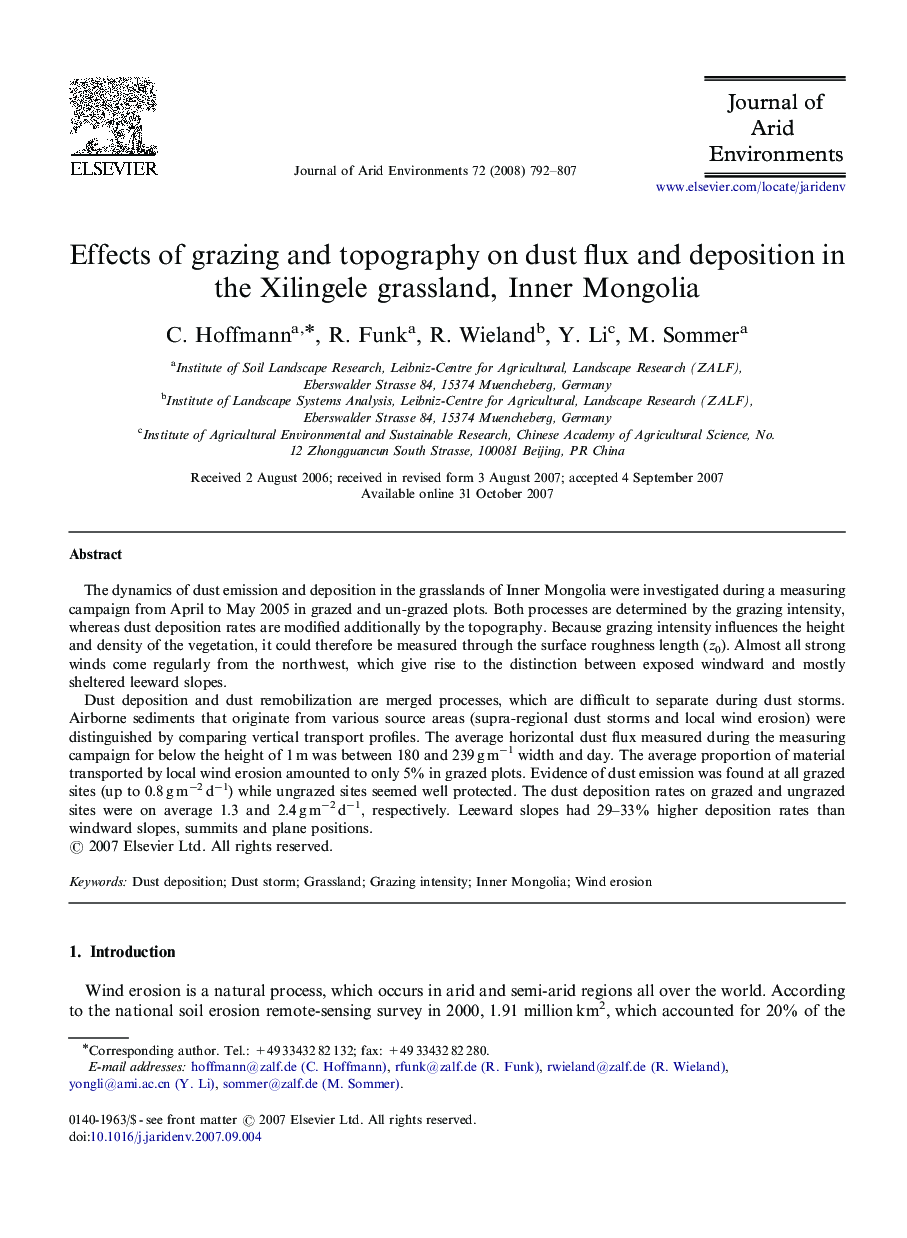| Article ID | Journal | Published Year | Pages | File Type |
|---|---|---|---|---|
| 4394418 | Journal of Arid Environments | 2008 | 16 Pages |
Abstract
Dust deposition and dust remobilization are merged processes, which are difficult to separate during dust storms. Airborne sediments that originate from various source areas (supra-regional dust storms and local wind erosion) were distinguished by comparing vertical transport profiles. The average horizontal dust flux measured during the measuring campaign for below the height of 1 m was between 180 and 239 g mâ1 width and day. The average proportion of material transported by local wind erosion amounted to only 5% in grazed plots. Evidence of dust emission was found at all grazed sites (up to 0.8 g mâ2 dâ1) while ungrazed sites seemed well protected. The dust deposition rates on grazed and ungrazed sites were on average 1.3 and 2.4 g mâ2 dâ1, respectively. Leeward slopes had 29-33% higher deposition rates than windward slopes, summits and plane positions.
Related Topics
Physical Sciences and Engineering
Earth and Planetary Sciences
Earth-Surface Processes
Authors
C. Hoffmann, R. Funk, R. Wieland, Y. Li, M. Sommer,
